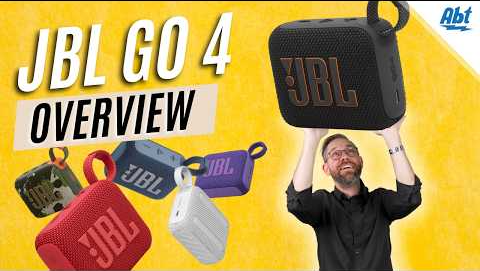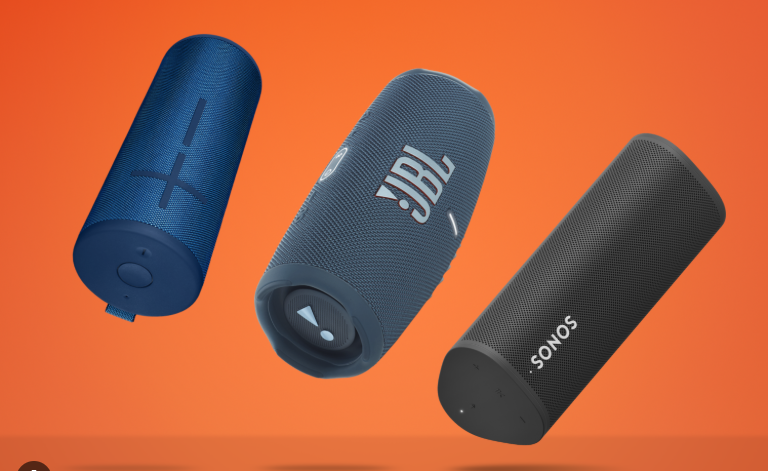Learning how to connect a Bluetooth speaker to a phone is the key to enjoying wireless audio for music, podcasts, or calls, whether at home, outdoors, or on the go. Bluetooth speakers are user-friendly, portable, and compatible with most smartphones, making them a popular choice for seamless audio streaming. In this comprehensive guide, we’ll walk you through the process of connecting your portable Bluetooth speaker to your phone, along with tips for Bluetooth speaker setup, troubleshooting, maintenance, and safety. Whether you’re using an iPhone, Android, or another device, this best Bluetooth speaker guide will ensure a smooth connection. For more audio insights, explore our recommendations at bluetoothspeakerusa.com.
Why Connect a Bluetooth Speaker to Your Phone?
Connecting a Bluetooth speaker to your phone allows you to enjoy high-quality audio without wires, offering flexibility for parties, travel, or casual listening. Modern portable Bluetooth speakers support advanced Bluetooth versions (5.0/5.3) for stable connections, long ranges (up to 150 feet), and features like stereo pairing or voice assistant integration. Understanding how to connect a Bluetooth speaker to a phone ensures you can maximize your speaker’s potential, whether it’s a compact model like the JBL Clip 5 or a party powerhouse like the Sony ULT Field 7. Let’s dive into the step-by-step process.
Step-by-Step Guide: How to Connect a Bluetooth Speaker to Your Phone
Connecting a Bluetooth speaker to your phone is quick and straightforward. Follow these steps to ensure a seamless Bluetooth speaker setup.
1. Prepare Your Bluetooth Speaker
Before connecting, ensure your portable Bluetooth speaker is ready:
- Charge the Speaker: Fully charge your speaker using the provided USB-C cable (or Micro-USB for older models). Most speakers, like the Anker Soundcore 3, take 2–4 hours to charge and offer 12–24 hours of playtime. A full charge prevents interruptions during pairing.
- Power On the Speaker: Press the power button (often marked with a power symbol). A tone or LED light (e.g., green or blue on JBL models) indicates the speaker is on.
- Activate Pairing Mode: Press the Bluetooth button (typically marked with a Bluetooth icon) to enter pairing mode. The LED will flash rapidly (e.g., blue on Ultimate Ears WONDERBOOM 4), and some speakers, like the Bose SoundLink Max, emit a pairing tone. Some models, like the Harman Kardon Luna, enter pairing mode automatically on first use. Check the manual for specifics.
2. Enable Bluetooth on Your Phone
Next, prepare your phone for pairing with the Bluetooth speaker:
- For iPhone (iOS): Go to Settings > Bluetooth and toggle Bluetooth on. The phone will scan for nearby devices. Alternatively, swipe down from the top-right corner to open the Control Center, tap the Bluetooth icon (if off), and access Bluetooth settings.
- For Android: Go to Settings > Connections > Bluetooth (or Settings > Bluetooth on some devices) and toggle Bluetooth on. You can also swipe down from the top of the screen to access Quick Settings and tap the Bluetooth icon.
- Other Devices: For less common phones (e.g., foldables or feature phones), refer to the device manual to locate Bluetooth settings. Most follow a similar process.
3. Pair the Bluetooth Speaker with Your Phone
Here’s how to complete the connection:
- Find the Speaker: In your phone’s Bluetooth settings, look for your speaker’s name (e.g., “JBL Flip 7,” “Soundcore Boom 2,” or “UE EVERBOOM”) under available devices. It may take a few seconds to appear.
- Tap to Connect: Tap the speaker’s name to initiate pairing. Some speakers, like the Sony ULT Field 7, support NFC—tap your NFC-enabled phone against the speaker’s NFC logo for instant pairing.
- Confirm Pairing: A tone or solid LED light (e.g., steady blue on Anker Soundcore models) indicates a successful connection. Your phone may display a confirmation message. Most speakers use Bluetooth 5.0 or 5.3 for a stable range of 33–150 feet.
- Test the Connection: Play music, a podcast, or a video from your phone to ensure audio streams through the speaker. Adjust volume using your phone or the speaker’s buttons.
4. Use Companion Apps (Optional)
Many Bluetooth speakers offer apps to enhance functionality:
- Download the App: Brands like JBL (JBL Portable), Anker Soundcore (Soundcore app), and Ultimate Ears (UE | BOOM) provide apps for EQ customization, firmware updates, and multi-speaker pairing (e.g., JBL PartyBoost, UE PartyUp).
- Customize Settings: Adjust EQ for genres like pop or hip-hop. For example, the Soundcore app offers a nine-band EQ for the Boom 2, while the JBL Portable app supports Auracast pairing for the Charge 6.
- Check Compatibility: Some models, like the Harman Kardon Aura Studio 4, lack app support, limiting customization to onboard controls.

Optimizing Your Bluetooth Speaker Experience
Once connected, enhance your experience with these tips:
- Placement for Best Sound: Place the speaker on a stable, flat surface at ear level. For 360-degree models like the Ultimate Ears HYPERBOOM, central placement fills the space evenly. For directional speakers like the Bose SoundLink Max, angle the grille toward you.
- Multi-Device Pairing: Some speakers, like the JBL Flip 7, support connecting two devices simultaneously via Bluetooth 5.3 or Auracast. Switch between devices seamlessly for shared control.
- Stereo Pairing: Pair two identical speakers (e.g., two Soundcore Motion 300s) for stereo sound using the brand’s app or onboard controls, ideal for larger spaces.
- Use for Calls: Speakers with built-in microphones, like the Sony ULT Field 7, support hands-free calls or voice assistants (e.g., Siri, Google Assistant).
Bluetooth Speaker Troubleshooting
Issues can arise when connecting a Bluetooth speaker to your phone. Here are common Bluetooth speaker troubleshooting tips:
- Pairing Fails: Ensure the speaker is in pairing mode (flashing LED) and within 33–150 feet of your phone. Avoid interference from Wi-Fi routers or other Bluetooth devices. Forget the speaker in your phone’s Bluetooth settings and re-pair. Reset the speaker by holding the power and Bluetooth buttons for 5–20 seconds (check the manual).
- Connection Drops: Move the speaker closer to your phone to avoid obstacles like walls. Disable nearby Bluetooth devices or Wi-Fi to reduce interference. Update the speaker’s firmware via its app.
- No Sound: Confirm the speaker is paired, unmuted, and your phone’s volume is up. Ensure your phone’s audio output is set to the speaker (check Bluetooth settings). Restart both devices.
- Poor Sound Quality: Lower the volume to avoid distortion, especially on smaller speakers like the JBL Clip 5. Adjust EQ settings via the app to balance sound for your environment.
For more Bluetooth speaker troubleshooting tips, visit our guide at bluetoothspeakerusa.com.
Bluetooth Speaker Cleaning and Maintenance Tips
Proper Bluetooth speaker cleaning and maintenance ensure longevity. Follow these Bluetooth speaker tips:
- Clean the Exterior: Wipe with a soft, dry cloth. For dirt or sand, use a damp cloth with mild soap, avoiding harsh chemicals that could damage rubber or fabric finishes (e.g., UE WONDERBOOM 4).
- Clear the Grille: Remove debris with a soft brush. For IPX7/IP67-rated speakers like the Anker Soundcore Boom 2, rinse under fresh water after beach use and dry thoroughly.
- Protect from Elements: Store in a case when not in use to shield from dust, sand, or UV exposure, especially for non-dustproof models like the Soundcore Boom 2 Plus.
- Battery Care: Charge every 2–3 months if unused to prevent battery degradation. Avoid overcharging by unplugging once fully charged.
- Check Ports: Keep USB-C or Micro-USB ports clean using compressed air or a small brush to remove debris.
For more maintenance tips, check our guide at bluetoothspeakerusa.com.
Bluetooth Speaker Safety Tips
To protect your portable Bluetooth speaker, follow these Bluetooth speaker safety tips:
- Check IP Rating: Verify the IP rating (e.g., IP67 for JBL Charge 6, IPX4 for JBL PartyBox Stage 320) to ensure suitability for your environment. Avoid submerging splashproof models or exposing non-dustproof speakers to sand.
- Avoid Overheating: Keep the speaker away from direct sunlight or heat sources to prevent damage to internal components.
- Use Proper Charging: Use the manufacturer’s charger or cable to avoid battery or circuit damage.
- Secure Placement: Place on stable surfaces to prevent falls, especially for heavier models like the JBL Boombox 3.

Advanced Tips for Connecting Your Bluetooth Speaker
Once you’ve mastered how to connect a Bluetooth speaker to a phone, try these advanced tips:
- Pair Multiple Speakers: Connect two speakers for stereo sound using features like JBL PartyBoost (JBL Flip 7), UE PartyUp (UE HYPERBOOM), or Soundcore TWS pairing (Soundcore Motion 300). Check the app or manual for instructions.
- Use NFC for Quick Pairing: If your phone and speaker (e.g., Sony ULT Field 7) support NFC, tap your phone against the speaker’s NFC logo for instant pairing.
- Optimize for Specific Apps: Adjust EQ settings in the speaker’s app for music apps like Spotify or Apple Music, or balance mids for podcast apps like Pocket Casts.
- Switch Devices Seamlessly: Many speakers support multi-device pairing (e.g., Bose SoundLink Max). Disconnect from one phone and connect to another without re-pairing.
Conclusion: Connect Your Bluetooth Speaker with Ease
Mastering how to connect a Bluetooth speaker to a phone unlocks the full potential of your portable Bluetooth speaker, delivering high-quality audio for any occasion. By following our step-by-step Bluetooth speaker setup guide, along with our troubleshooting, cleaning, and maintenance tips, you can ensure a reliable and long-lasting audio experience. From compact models like the JBL Clip 5 to party-ready options like the Sony ULT Field 7, there’s a Bluetooth speaker for every need. Ready to find the best Bluetooth speaker for you? Explore our best Bluetooth speaker guide at bluetoothspeakerusa.com for reviews and expert advice.